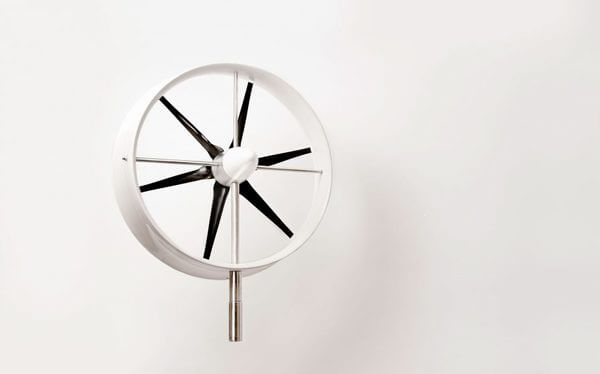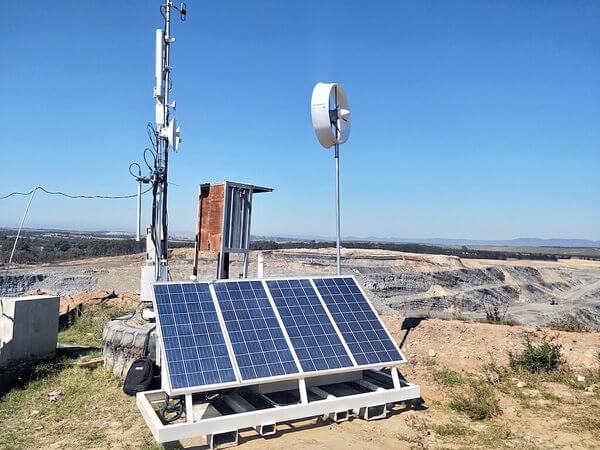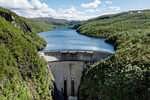News Release from Australian Renewable Energy Agency (ARENA)
Wind Industry Profile of
Small wind turbines solving big problems
Ten small wind turbines will be installed at ten remote Australian communication sites as part of a new project to boost the uptake of the technology.
Led by turbine manufacturer Diffuse Energy, the project will provide a renewable alternative to widely used diesel generators, reducing energy costs and improving resilience against bushfires and other natural disasters.
Diffuse Energy’s founders have set their sights firmly on the global telecommunications market, which they predict will spend more than US$3.4bn on distributed energy generation by 2024.
Their Hyland 920 turbine is capable of producing 500W of electricity, with a unique design that increases efficiency and overcomes many of the problems that have held small wind turbines back in the past. The units can be easily integrated into existing battery and solar systems, generating power during periods when solar cannot.

Diffuse Energy have developed a shroud that doubles the efficiency over other small turbines (Image: Diffuse Energy)
The turbines are being offered through a subscription service, where Diffuse Energy provide technical support, maintenance and even replacement units to give peace of mind in a market where products have struggled with reliability in the past.
ARENA has announced $341,990 towards the $922,307 project under its focus on integrating renewable energy into the electricity network, which according to ARENA CEO Darren Miller will make communications more reliable in the event of natural disasters.
“Diffuse Energy’s micro wind technology offers a real unique opportunity for a renewable energy solution to reduce emissions for off-grid telecommunications, while also ensuring the resilience of these towers in being able to operate at critical times such as during bushfires,” Darren Miller said.
“ARENA is excited to be assisting an Australian startup in proving the effectiveness of their small wind turbine technology which could have large market potential across many markets and applications. While this particular project is focusing on communications towers, the technology could also have other potential applications including mining, small microgrids, farming and data centres,” he said.
Grassroots Australian innovation
Designed in Newcastle and assembled in Port Stephens in NSW from components largely produced in Australia, Diffuse Energy’s turbines are already powering telecommunications towers, remote mine sites and even portable street signs.
The company has come a long way in a short time, founded in 2018 by three University of Newcastle PhD graduates and deploying its first commercial demonstration in 2019.
Co-founder Sam Evans told ARENA that their technology is a perfect match for off-grid communication sites.
“The reason it is such a good fit is they are often in remote locations and have historically relied on diesel. These telco sites are also elevated and exposed. They have all the right ingredients for wind energy,” Evans said.
“With communications you want to be on top of a hill, you want a clear line of sight and that makes it good for a wind resource.”
The turbines offer a way to grow the resilience of communications infrastructure during bushfires, floods and other natural disasters, which often cut off vital communication links when they are most needed.
Diffuse Energy forecasts that a nationwide rollout of their technology could displace 17 GWh of electricity from fossil fuel generation, avoiding 33,000 tonnes of CO2 emissions and saving the $43.9 million word of diesel fuel, transportation costs, and generator maintenance.
Efficient, cost-effective and dependable
Evans says their turbine is more efficient, reliable and commercially viable than other older small scale wind generators, overcoming weaknesses that have held the market back in the past.
Their design uses an aerodynamic shroud to double the output of the unit compared to similar sized rivals, while their subscription model provides peace of mind for customers.
“We’ve seen really rapid changes with advanced manufacturing, using injection moulding carbon fibre to produce blades that are strong, light and cheap. Even five years ago you couldn’t have dreamed of doing that,” he said.
Technological advances mean that the turbines can be integrated more easily than in the past, connecting to batteries and existing solar systems just like an additional solar panel.

A Diffuse Energy paired with a solar panel, powering a communications station at a remote mine (Image: Diffuse Energy)
“We can just plug into an existing solar and battery system, so if you have a terrible cloudy, wet, and windy week with low solar generation, you are likely to have much stronger wind generation. We see it as a complementary technology,” Evans explained.
They offer the turbines through a subscription model tailored to the telecommunications industry’s preference for operational expenses rather than large capital investments. While this means Diffuse Energy bears all the risk, they are confident in their product and will replace turbines or provide support in the event of any issues.
Accelerating to the market
Evans attributes much of Diffuse Energy’s rapid progress to the CSIRO’s ON science and technology accelerator program, which pushed the founders out of their comfort zone, encouraging them to navigate the early stages of the startup journey.
They also participated in ARENA’s 2019 A-Lab, which Evans says gave them an insight into ARENA’s funding process and helped to move quickly through the early stages of a startup.
While their focus is the telecommunications market, the technology will likely be picked up by other sectors.
“The target market is telecommunications because as far as we know we are the only player in small wind, but there are definitely broader applications in mining, construction and even rail.”
- Source:
- ARENA
- Author:
- Press Office
- Link:
- arena.gov.au/...
- Keywords:
- small wind, turbine, Diffuse Energy, telecommunication, Australia, Newcastle startup, bushfire, natural diasater, remote, site, power, electricity

























